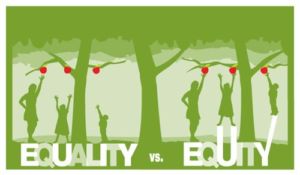Met Council to spend $25 million to monitor race-based use of parks
A walk in the park may be just that to most of us, but not the Met Council. It all depends on who’s taking a walk in the park.
A remarkable 47 million visits to regional parks were recorded last year, more than visit the Mall of America. Yet the Met Council staff has concluded that some racial groups aren’t using the parks as much as their numbers suggest they should–and local governments get the blame.
“Missing from the throngs of visitors were people of color in numbers proportional to their share of the region’s total population,” according to the Met Council website. “The shortfall is especially significant for recent immigrants to the Twin Cities area. In the future, the disparity may widen. People of color are expected to make up 40% of the region’s population by 2040, compared with 24% in 2010.”
In a new “equity toolkit” for local governments that takes effect this fall, the Met Council ties $25 million in taxpayer funding for parks and trails to tracking visitors by their race and representation in the population. Funding proposals will be evaluated on the basis of how comprehensively local governments address the racial make-up of visitors to parks.
Local park boards will be expected to track the number of visitors by race and ethnicity, the number of culturally relevant programs and new partnerships with local interest and advocacy groups.
“In the regional parks plan, the Council has committed to several strategies to increase equitable use of the regional parks system. Examples include funding an ambassador program to increase awareness of, and visits to, the regional parks for underserved populations; and creating a competitive grant program to help fund capital projects that will strengthen equitable use,” the unelected regional government’s website states.
A checklist of barriers said to be holding back increased minority representation in the parks was identified in a 2014 study of regional park use by “communities of color.”
The reasons range from no place to pray to not knowing the parks even exist, according to the Met Council study:
Religious practices. “We pray five times a day, and women are supposed to have a little cover when they pray outside.”
Language. “I really want to go there, but it’s hard because of the language barrier.”
Lack of transportation options. “If we don’t drive, we don’t have a way to go.”
Knowing about the parks. “A lot of people are not really aware of regional parks.”
The toolkit contains spreadsheets for measuring participation in the parks by ethnicity, establishing race-based benchmarks as a priority for projects. It’s not clear how local staff are supposed to obtain and verify the background information on park users, but they’re encouraged to use so-called “Equity Inventory Reports” to break down ethnic groups into minute percentages.
A sample EIR in a lengthy power point presentation plugged in .008% as the number for “Native Hawaiian & Other Pacific Islander.” The slide also listed “American Indian & Alaska Native” at .7%, Asian 3.9% and left open the possibility for “Some Other Race.”
The equity initiative also requires parks to track populations with hearing, vision, cognitive, ambulatory, self-care and independent living difficulties. There’s no estimate on the cost of the increased time and paperwork required for implementing the equity toolkit, but the Met Council warns local governments to expect an “immediate increase in time spent completing the relevant grant applications.”